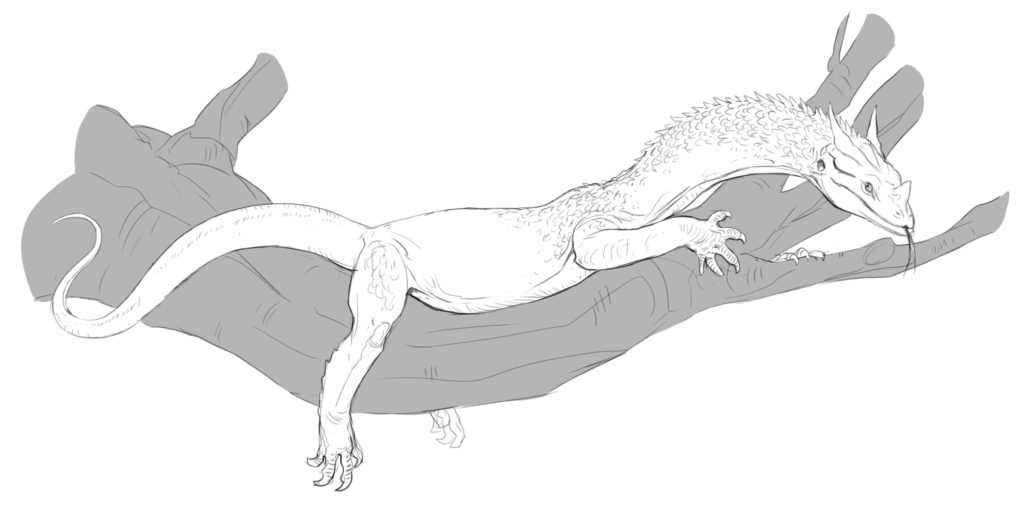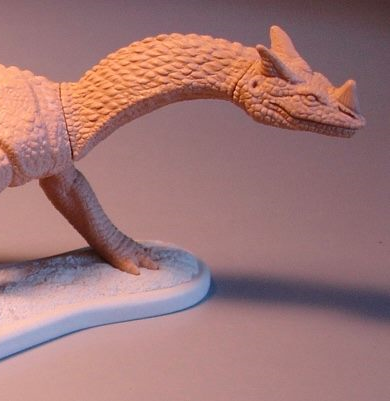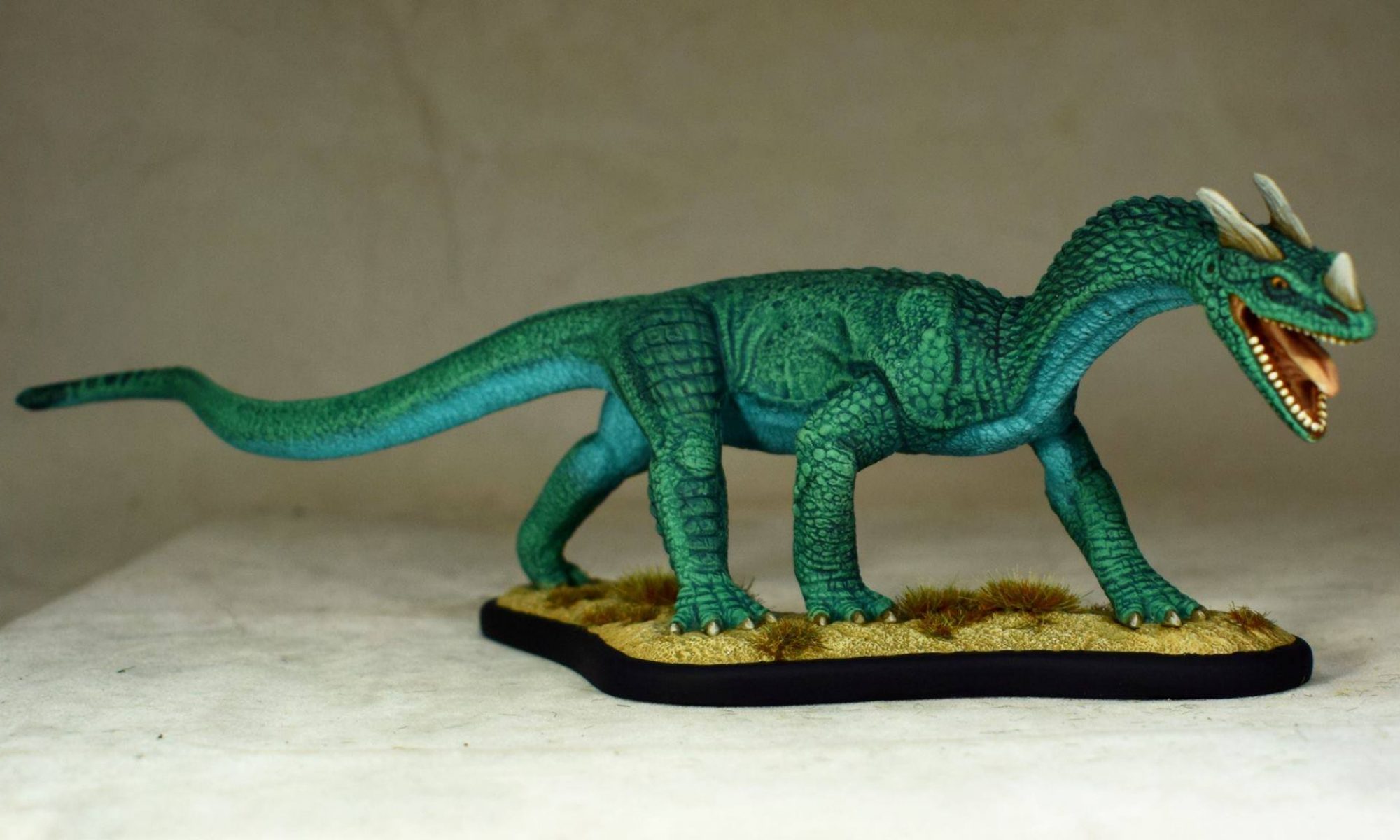
The Sirrush is the largest predator in Azor. They are the Azoran Dragons, the undisputed apex predator of the land. Some of the largest crocodiles might mass nearly as much, and some of the longest snakes might be a bit longer, but nothing can match them for ferocity and toughness.
Sirrush are primarily fish eaters, their favorite food being the huge catfish that teem in the shallow waterways and slow rivers. They are most commonly seen lounging on riverbanks, their necks stretched out, resting on low-hanging branches, looking for fish to reach down and snatch. However, they are able and indiscriminate hunters, not limited to riparian environs. Juvenile individuals in particular can be found almost anywhere, and are known for trying to eat anything smaller than themselves. Fully grown adults are just as likely to scavenge carrion or steal kills from other predators (including juvenile Sirrush) as they are to hunt. Even the notoriously belligerent Skull Pigs will reluctantly surrender a kill to a hungry Azoran Dragon.

Sirrush have specialized scales covering their necks. These scales have a slightly metallic sheen, almost like fish scales, and can be flared out a bit when the animal is agitated. They also use those scales to break up the shadow of their neck when they are fishing, fluttering or waving them to match the movement of nearby leaves. The neck scales also seem to play a role in courtship rituals, as a way for one Sirrush to display aggression or interest towards another.
Like some crocodiles, they make large nests out of piles of rotting leaves and other debris, laying their eggs in shallow dirt mounds before covering them with foliage. This is when Sirrush are at their most dangerous, as they will aggressively attack any creature, large or small, who approaches the egg mound. Females will protect and herd the young for several months after they hatch, after which time the juveniles will disperse. At a glance, these very young juveniles can be mistaken for long-legged monitor lizards, but as they grow their horns become more prominent, and their fearlessness and aggression distinctly mark their true heritage. Juveniles may stay in packs of 2-4 animals for several years, but as they get older they become increasingly territorial and solitary. Individuals reach maturity at about 15 years of age, and can live up to 100 years (although rarely more than 70).

Although adults are relatively rare, in theory Sirrush could be encountered anywhere in Azor. Territories of any adults near human settlements will be well known and avoided, and juveniles who cross human areas will be hunted and killed, if possible. A trio of horse-sized Sirrush juveniles are a threat to travelers and livestock, and experienced adventurers or soldiers could find themselves hired to hunt them down or drive them away. Adults guarding a nest would be a terrifying threat, and their tendency to cache food in a den means that there may occasionally be treasure to be found (anything non-edible carried by their victims). After nesting in a territory for 20 or 30 years, the amount of coin and metal might be significant, although heroes might need to spend a week excavating a lair to uncover and find it all.

